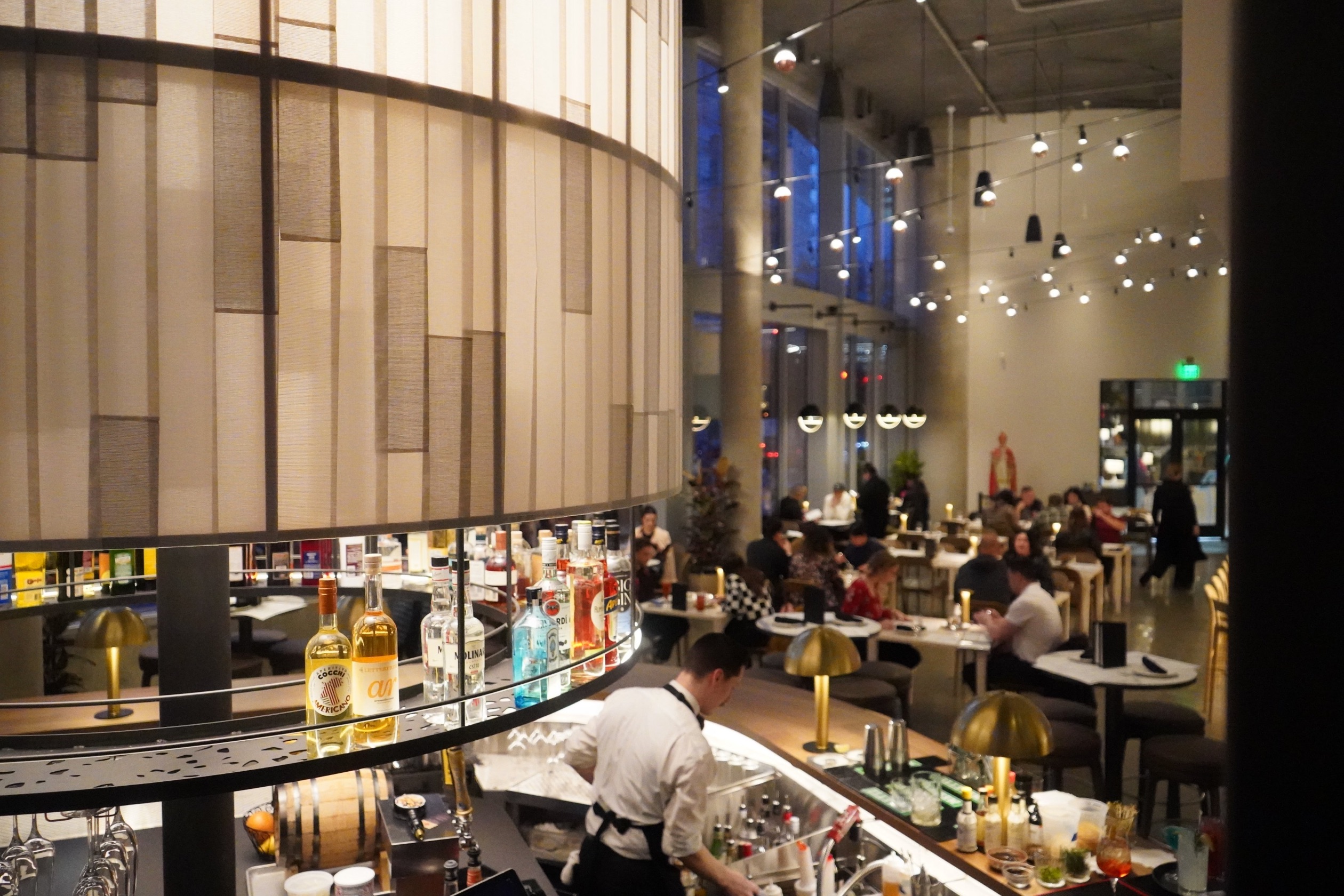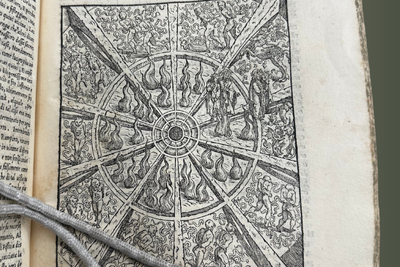More than a century ago, Our Lady of Mount Virgin, located in Seattle’s Mount Baker neighborhood, was once the heart of Seattle’s Italian community. In 1915, when the church was built, about 215 Italian families called the neighborhood home. As new immigrants arrived, Our Lady of Mount Virgin was one of the first places they would visit for information on jobs and housing, to make new friends and to tend to their spiritual needs.
A few years later, Seattle watched in horror as the great flu pandemic of 1918 spread through the Pacific Northwest along with the rest of the world. Although it remains to be seen whether the coronavirus will be as devastating, the so-called “Spanish flu” was the most widespread and lethal outbreak of disease in recorded history. In Washington state, the flu touched nearly every community, killing about 5,000 Washingtonians. Unlike COVID-19, more than half the victims were between the ages of 20 and 50.
Our Lady of Mount Virgin had its roots in a small German church built in the 1890s by Seattle’s German Catholic community who wanted a church where they could worship in their own language. The wooden church was named for St. Boniface, the patron saint of Germany. But by 1910, the neighborhood was changing as more Italians moved into the area. This new group of immigrants wanted a church that reflected their own heritage and language.
Edward O’Dea, bishop of Seattle from 1896 until his death in 1932, called on the Jesuit community to minister to the Italian immigrants, and a priest called Father De Rop took on the task. On September 10, 1911, Fr. De Rop celebrated the first mass in Italian at St. Boniface. A few weeks later, he changed its name to Our Lady of Mount Virgin in tribute to the famous Benedictine monastery of Montevergine in southern Italy.
By 1913, De Rop’s health was failing, and Fr. Ludovico Caramello, a charismatic and energetic Jesuit priest, stepped in. Caramello was from a well-to-do family in Turin, Italy, and had served at a parish in Montreal becoming moving to Seattle.
He took up residency in St. Boniface’s rectory while making plans to build a larger and grander church in the Florentine style. He also wanted a school built on the site. When his first collection plate took in just 35 cents, Caramello simply laughed and went ahead with his work, “smiling and full of hope,” according to an article in The Seattle Times.
Thanks to this hopeful attitude and Caramello’s many contacts back in Italy, his dream of a new church was realized when the new Our Lady of Mount Virgin opened its doors in 1915. The church was built in a Renaissance Revival style on a steep hill, overlooking lush gardens. Tall arched stained-glass windows let in daylight and a bell tower graced the front façade.
The smaller Church of St. Boniface was decommissioned and served for a while as a parish hall. It later became a gym, kindergarten and workshop before it was torn down around 1970.
In 1918, a parochial school opened with an enrollment of 162 students and remained in operation for more than 60 years. The Dominican sisters of Tacoma, long recognized for their dedication to quality education, took charge of the school, led by Reverend Mother Thomasina.
For the newly arrived Italians, education was seen as the ticket to a better life. “The immigrant parents were poor and had to take what jobs they could get because of the language barrier,” said Sister Manette in an interview with The Seattle Times in the 1970s. “They saw education as a doorway for their children and would sacrifice anything to get it for them.” Fr. Caramello was determined to preserve the children’s connection to their heritage, and visited the school every week to provide instruction in Italian.
Fr. Caramello was 44 years old when he arrived in Seattle, and he remained pastor of Our Lady of Mount Virgin until he died in 1949 at the age of 79. He was devoted to his students and his parishioners and worked hard to merge the Italians who arrived from diverse regions of Italy into one unified community.
Although Mount Virgin has changed little over the decades, the neighborhood has undergone significant transformation. In 1940 and again in the 1990s, parish families were displaced by the construction of, and later the expansion of, the Mount Baker tunnel, the last leg of I-90, which lies adjacent to the church.
The parish school closed in 1978 and the church survived a few earthquakes. By the 1980s, many Italian-Americans had left the old neighborhood and moved elsewhere in town or to the suburbs. Church attendance at Mount Virgin dropped dramatically. The original families who drove to church for mass each week started to worry that the historic parish would close.
But new immigrant groups arrived, breathing new life into the neighborhood. First, came Lao, Hmong and Khmu refugees, fleeing persecution in Southeast Asia. Those groups were followed by others from Vietnam, Hong Kong, Taiwan and China. Seattle’s Native American community found a home there, as well. Most masses today are celebrated in multiple languages, including Vietnamese, Lao and Chinese.
Although all public masses are currently canceled at Mount Virgin Church due to the COVID-19 outbreak, the church’s 105-year history of providing support and comfort during times of crisis continues to offer the community a beacon of hope.
Più di un secolo fa, Our Lady of Mount Virgin (Nostra Signora del Monte Vergine), situata nel quartiere di Mount Baker a Seattle, era il cuore della comunità italiana di Seattle. Nel 1915, quando fu costruita la chiesa, circa 215 famiglie italiane consideravano il quartiere la loro casa. Quando arrivavano nuovi immigrati, Our Lady of Mount Virgin era uno dei primi posti che visitavano per avere informazioni sul lavoro e l’alloggio, per fare nuove amicizie e per occuparsi dei loro bisogni spirituali.
Qualche anno dopo, Seattle assistette con orrore alla grande pandemia influenzale del 1918 che si diffuse nel Nord-ovest del Pacifico come nel resto del mondo. Anche se resta da vedere se il coronavirus sarà altrettanto devastante, la cosiddetta “influenza spagnola” è stata l’epidemia più diffusa e letale della storia. Nello Stato di Washington, l’influenza ha toccato quasi tutte le comunità, uccidendo circa 5.000 residenti. A differenza di COVID-19, più della metà delle vittime aveva un’età compresa tra i 20 e i 50 anni.
Our Lady of Mount Virgin affonda le sue radici in una piccola chiesa tedesca costruita nel 1890 dalla comunità cattolica tedesca di Seattle, che voleva una chiesa dove poter praticare il culto nella propria lingua. La chiesa di legno prese il nome di San Bonifacio, patrono della Germania. Ma nel 1910 il quartiere stava cambiando man mano che sempre più italiani si trasferivano nella zona. Questo nuovo gruppo di immigrati voleva una chiesa che rispecchiasse il proprio patrimonio e la propria lingua.
Edward O’Dea, vescovo di Seattle dal 1896 fino alla sua morte nel 1932, chiamò la comunità dei gesuiti perché servisse gli immigrati italiani, e un sacerdote chiamato padre De Rop assunse l’incarico. Il 10 settembre 1911, p. De Rop celebrò la prima messa in italiano a San Bonifacio. Qualche settimana dopo, ne cambiò il nome in Our Lady of Mount Virgin in omaggio al famoso monastero benedettino di Montevergine nel sud Italia.
Nel 1913, la salute di De Rop peggiorò, e intervenne p. Ludovico Caramello, un carismatico ed energico sacerdote gesuita. Caramello proveniva da una famiglia benestante di Torino, in Italia, e aveva servito in una parrocchia di Montreal, trasferendosi poi a Seattle.
Si stabilì nella canonica di San Bonifacio, mentre progettava di costruire una chiesa più grande e in stile fiorentino. Sul posto voleva anche una scuola. Quando il suo primo giro di elemosine raccolse solo 35 centesimi, Caramello semplicemente sorrise e proseguì il suo lavoro, “sorridente e pieno di speranza”, secondo un articolo del Seattle Times.
Grazie a questo atteggiamento di speranza, e ai numerosi contatti in Italia, il suo sogno si realizzò nel 1915 quando la nuova Nostra Signora del Monte Vergine aprì i battenti. La chiesa fu costruita in stile rinascimentale su una collina ripida, affacciata su giardini lussureggianti. Alte vetrate ad arco lasciavano entrare la luce del giorno e un campanile adornava la facciata anteriore.
La più piccola chiesa di San Bonifacio fu dismessa e servì come sala parrocchiale. Più tardi divenne una palestra, un asilo e un laboratorio prima di essere demolita nel 1970.
Nel 1918, aprì una scuola parrocchiale con 162 studenti iscritti e rimase in attività per oltre 60 anni. Le suore domenicane di Tacoma, da tempo note per la loro dedizione all’istruzione di qualità, si occuparono della gestione della scuola, guidata dalla reverenda madre Thomasina.
Per gli italiani appena arrivati, l’istruzione era il biglietto per una vita migliore. “I genitori immigrati erano poveri e dovevano accettare solo i lavori che potevano fare a causa della barriera linguistica”, ha detto sorella Manette in un’intervista al Seattle Times nel 1970. “Vedevano l’educazione come un’opportunità per i loro figli e avrebbero sacrificato qualsiasi cosa per farli andare a scuola”.
Caramello era determinato a preservare il legame dei bambini con il loro patrimonio e faceva visita alla scuola ogni settimana per dare loro insegnamenti in italiano.
Padre Caramello aveva 44 anni quando arrivò a Seattle, ed è rimasto parroco di Our Lady of Mount Virgin fino alla sua morte nel 1949, all’età di 79. Era devoto ai suoi studenti e ai suoi parrocchiani e ha lavorato sodo per unire gli italiani, che arrivavano da diverse regioni d’Italia, in un’unica comunità.
Sebbene la chiesa del Monte Vergine sia cambiata poco nel corso degli anni, il quartiere ha subito una trasformazione significativa. Nel 1940 prima e poi di nuovo nel 1990, famiglie di parrocchiani furono fatte spostare per la costruzione, e più tardi per l’espansione, della galleria del Mount Baker, l’ultima tappa della I-90, che si trova accanto alla chiesa.
La scuola parrocchiale ha chiuso nel 1978 e la chiesa è sopravvissuta ad alcuni terremoti nel corso degli anni. Negli anni ’80 molti italoamericani avevano già lasciato il vecchio quartiere e si erano trasferiti in città o in periferia. La frequentazione della Chiesa del Monte Vergine è calata drasticamente. Le famiglie originarie, che ogni settimana si recavano in chiesa per la messa, hanno iniziato a temere che la storica parrocchia chiudesse.
Ma sono arrivati nuovi gruppi di immigrati che hanno portato nuova vita al quartiere. Per prima cosa, sono arrivati i profughi di Lao, Hmong e Khmu, in fuga dalle persecuzioni nel Sud-est asiatico. A quei gruppi sono seguiti altri provenienti da Vietnam, Hong Kong, Taiwan e Cina. Anche la comunità dei Nativi americani di Seattle ha trovato casa lì. Oggi la maggior parte delle messe viene celebrata in più lingue, tra cui vietnamita, lao e cinese.
Sebbene tutte le messe pubbliche siano attualmente cancellate a Our Lady of Mount Virgin a causa dell’epidemia di COVID-19, i 105 anni di storia della chiesa, che ha fornito sostegno e conforto durante i periodi di crisi, continuano ad offrire alla comunità un faro di speranza.





























